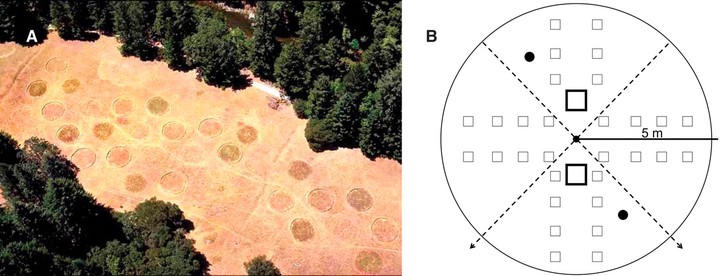Community responses to simulated climate change
 (Suttle, Thomsen, and Power 2007)
(Suttle, Thomsen, and Power 2007)In order to understand ecological response to climate change, it is important not only to understand species’ responses to changing temperature, precipitation, etc., but also responses to changes in species interactions. Suttle, Thomsen and Power (2007) investigated these two effects in a California prairie system, where plots were exposed to water treatments based on multiple climate change projections for five years. They demonstrated the strong influence of species interactions on community-level response to changing climate. One watering treatment favored nitrogen-fixing forbs in the first year, which facilitated the annual grasses to outcompete other plant functional groups in subsequent years. Feedbacks and species interactions reversed initial species-level responses to changing climate. To disentangle the effect of nitrogen-fixing forbs, the watering treatments were continued for another five years with the addition of randomized removal of nitrogen-fixing forbs on plots. In collaboration with Dr. Meredith Thomsen, I statistically analyzed the data to determine how precipitation and nitrogen availability affect the biomass of several plant functional groups.